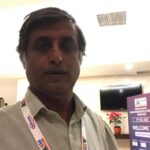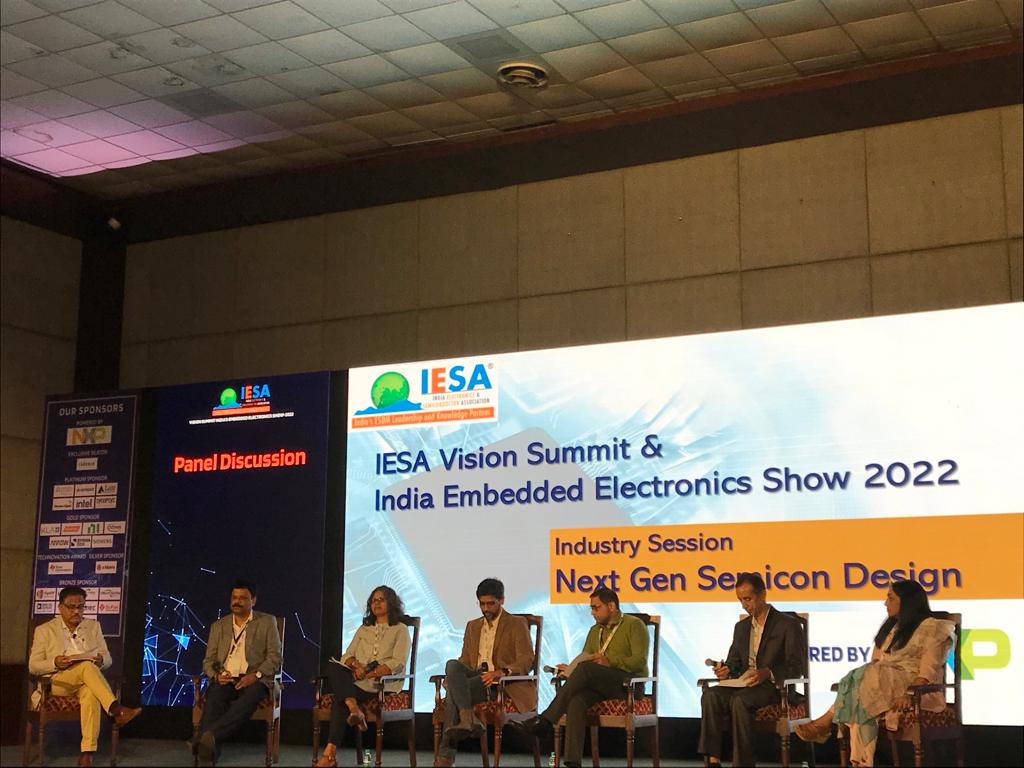Bengaluru, NFAPost: At the 17th edition of IESA vision summit, speakers from leading semiconductor companies spoke about latest trends in electronics and semiconductor market. Though the semiconductor market is seeing a dip by the end of 2022, but the industry is upbeat about future of electronics and semiconductor industry.
The global semiconductor market witnessed a high-growth of 26.2% in 2021 and growth continued in early 2022, however by end of second quarter of 2022, leading chip makers started seeing a big drop in quarterly revenues. Most of the experts predict the fall to continue for some more quarters. The industry is expected to recover in the second half of 2023.
Irrespective of revenue downfall, the leading chip makers pouring in hundreds of billions of dollars into expansion of semiconductor manufacturing facilities. One of the world’s leading semiconductor memory manufacturer Micron to invest $100 in building a GigaFab semiconductor manufacturing facility in New York.
At this year’s vision summit, this author could see high level of confidence by industry experts and attendees on the future of semiconductor technology. The first speaker at the event, Dr. Prabu Raja – Senior Vice President, Semiconductor Product Group – Applied Materials, calling next wave of semiconductor growth as “golden age of semiconductor technology”. AI, IoT, 5G are the terms picked by him as enablers of growth. Due to system-in-package technology trend, Applied is heavily focusing on development and manufacturing of equipments to assemble system-in-package by using wafers from multiple sources.
Memory is important and is biggest market among semiconductors. Semiconductor memory market is more cyclical than any other semiconductor verticals. Due to complex technology involved in making extremely dense memory chips, there are only few companies taking on the full market. Samsung, SK Hynix, Micron, Western Digital are the four top vendors in this market, having more than 80% of market share.
Khurram Ismail from Western Digital spoke about latest trends in semiconductor memory market. He sees NAND Flash memory as the only nonvolatile memory for large data storage for some more time. PCRAM, RRAM, MRAM and many such emerging nonvolatile memory technologies facing significant difficulty to cross technology-hurdles in replacing NAND Flash.
Western Digital’s Khurrm Ismail says these are potential candidates to replace NAND Flash, but it’s going to take some more time, at least not in the immediate future. The massive amount of content created by billions of users and trillions of devices to create a bigger market for semiconductor memory in future.
Test gear maker Keysight President and CEO Satish Dhanasekaran shared to the attendees on how 5G and advanced semiconductor manufacturing is driving the market for new set of test-equipment. Keysight’s test tools are used to push the boundary of technology limits in data-speeds. In the semiconductor manufacturing domain, Keysight offers high power semiconductor design simulation, modelling and characterisation, position systems for lithography, inspection and metrology, and wafer level test equipment. Keysight has large base of operations to support local customers in India.
Synopsys GM Corporate staff – System Designs Group, Ravi Subramanian said world is undergoing huge digital transformation and India is leading in this transformation. He shared a slide, showing how the percentage of semiconductor content in electronic systems is rising over the years. Although semiconductors are the engine’s of modern software, software still is more powerful and a more driving force of the economy. Another EDA domain expert Dr. Anirudh Devgan – CEO – Cadence Design Systems could see overhyping of the word AI (Artificial Intelligence). He sees most of the times AI is nothing but a computer science.
The total electronics market in the world is estimated close to $3.0 trillion. India share in this global electronics market is around 5 to 6%. The global semiconductor market is in the range of $550 Billion and India’s share in the global semiconductor market in terms of local consumption of chips is around 6%, which comes to around $30 Billion.
India’s entire domestic demand of chips is presently met through imports with no presence of local semiconductor manufacturing fab facilities. However there is a huge push to establish multiple number of semiconductor fabs in India. This clearly tells their is a great opportunity in India to localise design, manufacturing and everything in semiconductors. If not golden age, India is still yet to see silver age in semiconductors.

Written By Partha





